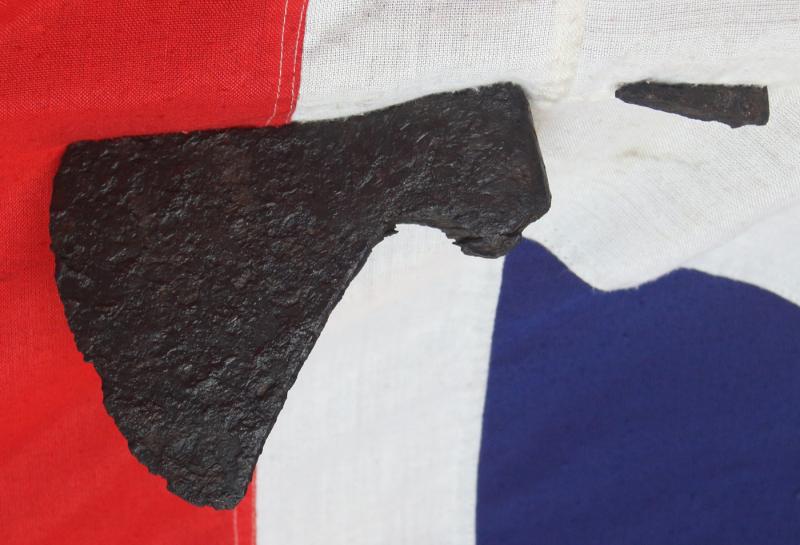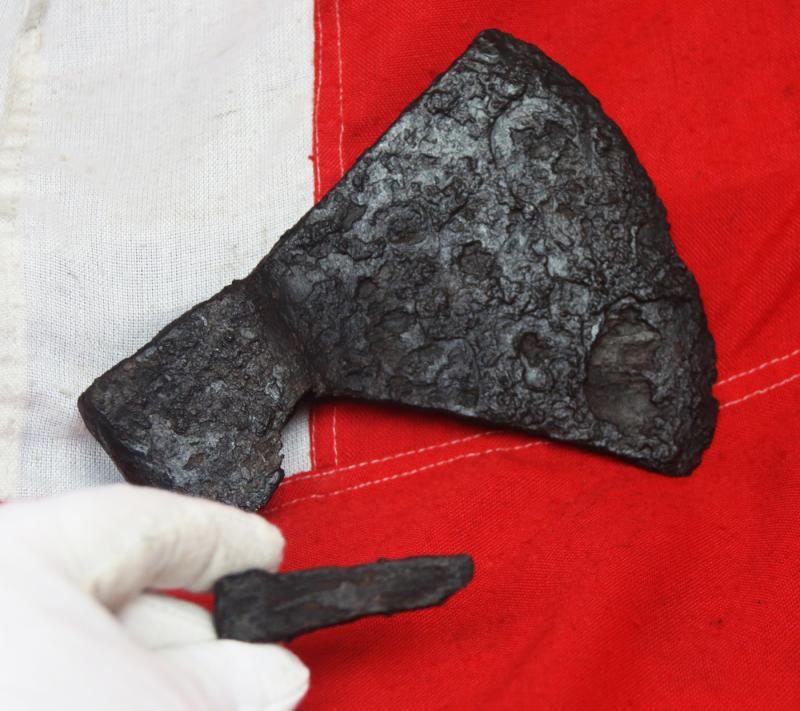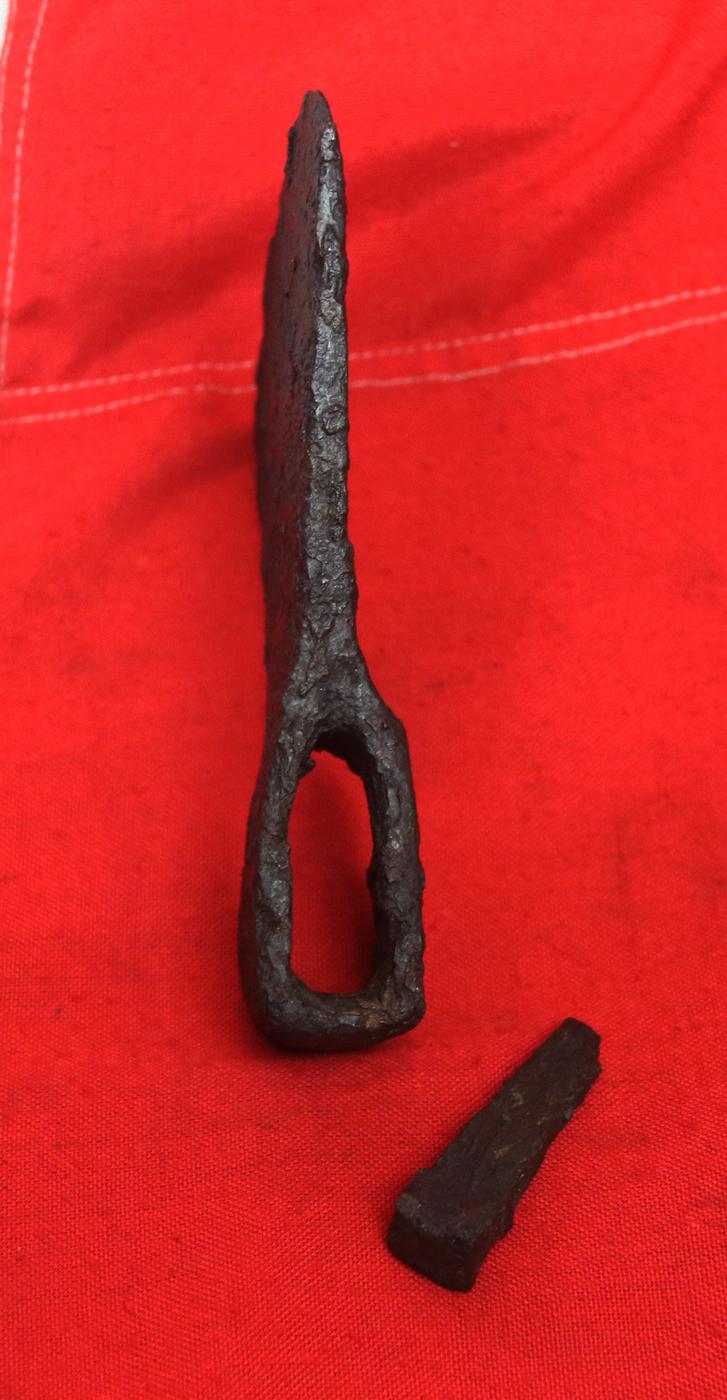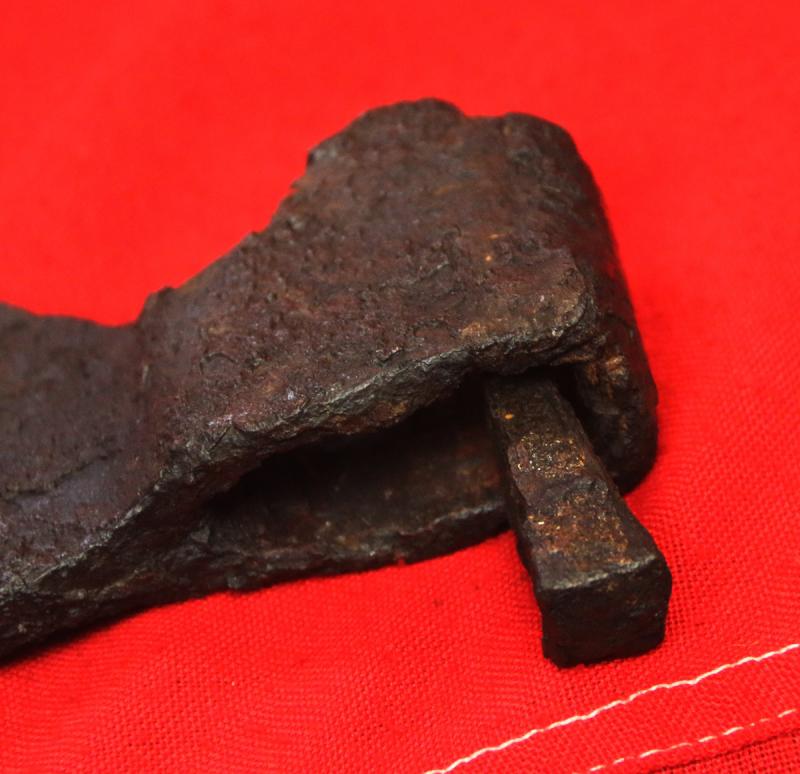A Super Historical Saxon Warrior's Axe. Likely a Saxon Thegn. Circa 850. As Was Used at the Battle of Basing of Saxon King Æthelred and His Brother, The Future Saxon, King Alfred the Great During the Viking Invasions of the Kingdom of Wessex
Just returned today from over two months of no expense spared conservation.
Incredibly the axe was recovered with it's original haft wedge still intact and present, this simply almost never happens. it has little or no intrinsic value as such at all, as an axe wedge, but historically, it is amazing. Found many decades ago, by the grandfather of its last owner, near the old site of Rowlads Castle, Hampshire, in the Saxon Kingdom of Wessex.
The Battle of Basing was a victory of a Viking army over the West Saxons at the royal estate of Basing in Hampshire on about 22 January 871.
In late December 870 the Vikings invaded Wessex and occupied Reading. Several battles followed in quick succession, Englefield, a West Saxon victory, Reading, a Viking victory and Ashdown on about 8 January, a West Saxon victory. Two weeks later, King Æthelred and his brother, the future King Alfred the Great, were defeated at Basing. There was then a lull of two months until the Battle of Meretun, when the Vikings again prevailed. Soon after Easter, which fell on 15 April in that year, Æthelred died and was succeeded by Alfred.
In 871, the Vikings continued to attack. Alfred's brother Aethelred died in one of the battles and Alfred was crowned king at the age of 22. Over the next several years Alfred fought off the Vikings. After many battles, he thought they had finally achieved some kind of peace. However, in 878, the Danish King Guthrum led a surprise attack against Alfred and his army. He was defeated. Alfred managed to escape, but with only a few men. He fled so that he could plot his counterattack.
Many of the men of Wessex were tired of the constant raids and attacks of the Vikings; as a result, they rallied around Alfred and soon the king had a strong army again.
Despite being very courageous and a great leader, Alfred was a frail man who struggled with illness for most of his life. He did not let this stop him though; with his new army, Alfred counter-attacked the Vikings. After a hard-fought battle, he
defeated King Guthrum and took back his land at Chippenham. Subsequently, Alfred established a peace treaty: the Vikings would remain on the eastern side of Britain and the Anglo Saxons on the west. The Viking territory became known
as Danelaw.
Once peace had been established with the Vikings, Alfred went about rebuilding his kingdom. With so much focus on fighting off the Vikings, the educational system of England had almost disappeared. Alfred knew that education was
important, so he founded schools and rebuilt monasteries.
In 886, he re-captured London and was named King of the English on Anglo Saxon coins. This was the first time a man had ever reigned over most of the country.
A devout Christian, he began to spread the religion throughout England and many Saxons and Vikings, who were Pagan, converted to Christianity. Not only this, but he helped to translate the Bible from Latin into English so that more people could read – this is another example of how he helped to improve education too.
In addition to this, Alfred made other reforms and improvements to his kingdom:
he built forts throughout the country, established a strong navy, and brought talented European scholars and craftsmen across the channel to England. Furthermore, he also established a national code of law.
The Saxon settlement at Southampton was known as Hamtun, while the surrounding area or scīr was called Hamtunscīr. The old name was recorded in the Domesday book as Hantescire, and it is from this spelling that the modern abbreviation "Hants" and thus its name Hampshire derives.
In later Anglo-Saxon England, a thegn was an aristocrat who owned substantial land in one or more counties. Thanes ranked at the third level in lay society, below the king and ealdormen. Thanage refers to the tenure by which lands were held by a thane as well as the rank.
Thegns, the wealthy noblemen of Anglo-Saxon kingdoms, served as retainers for their lords, fulfilling their obligation of military service.
Well-trained and equipped, thegns served as infantrymen, clad in chain mail armour and iron helmets shields.
Led to battle under dragon banners, they provided Saxon armies with a steadfast, hard-hitting core.
The term thane was also used in early medieval Scandinavia for a class of retainers, and thane was a title given to local royal officials in medieval eastern Scotland, equivalent in rank to the child of an earl.
Thegns were divided into three ranks: ealdormen (later earl), king's thegns, and median thegns. Below ealdormen were king's thegns, so called because they only served the king. The lowest thegnly rank were the median thegns who owed service to other thegns. The higher a thegn's rank, the greater the heriot he paid to the king.
Thegns were the backbone of local government and the military. Sheriffs were drawn from this class, and thegns were required to attend the shire court and give judgment. For these reasons, historian David Carpenter described thegns as "the country gentry of Anglo-Saxon England". Although their exact role is unclear, the twelve senior thegns of the hundred played a part in the development of the English system of justice. Under a law of Aethelred they "seem to have acted as the judicial committee of the court for the purposes of accusation". This suggests some connection with the modern jury trial.
Every single item from The Lanes Armoury is accompanied by our unique Certificate of Authenticity. Part of our continued dedication to maintain the standards forged by us over the past 100 years of our family’s trading, as Britain’s oldest established, and favourite, armoury and gallery
Code: 25448








